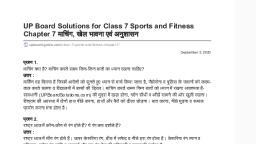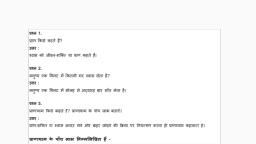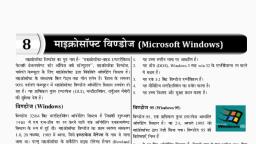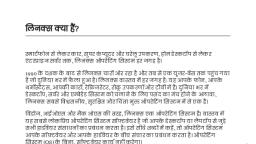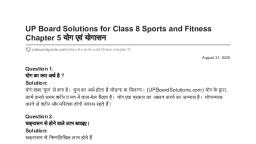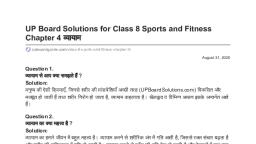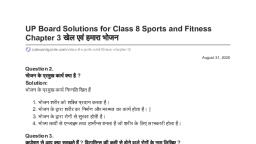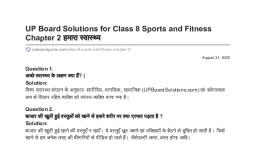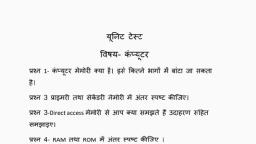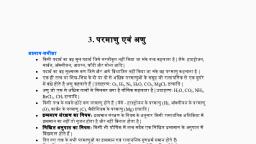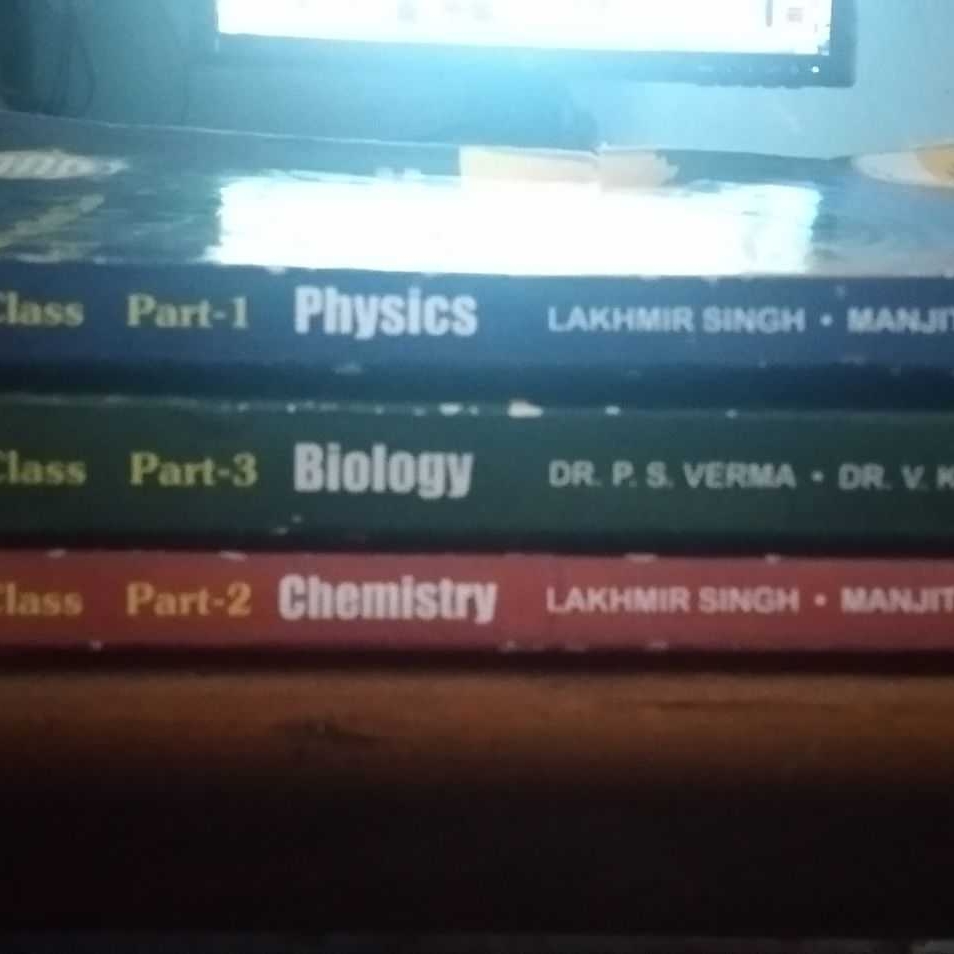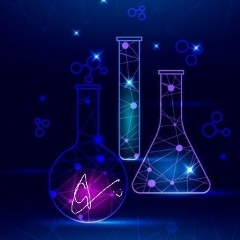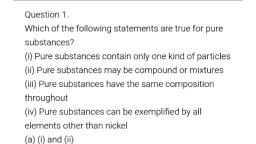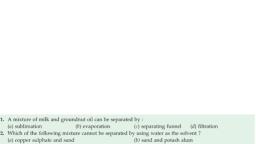Question 1 :
Which separation technique will you apply for the separation of oil from water?
Question 2 :
Which separation technique will you apply for the separation of wheat grains from husk?
Question 3 :
Which separation technique will you apply for the separation of fine mud particles suspended in water?
Question 4 :
Which separation technique will you apply for the separation of iron pins from sand?
Question 5 :
Which separation technique will you apply for the separation of small pieces of metal in the engine oil of a car?
Question 6 :
Which separation technique will you apply for the separation of different pigments from an extract of flower petals?
Question 7 :
Which separation technique will you apply for the separation of sodium chloride from its solution in water?
Question 8 :
Which separation technique will you apply for the separation of ammonium chloride from a mixture containing sodium chloride and ammonium chloride?
Question 9 :
<img style='object-fit:contain' src='https://teachmint.storage.googleapis.com/question_assets/cbse_ncert/61b1d2e4f59b460d7261f64f.jpeg' />
From the above figure, Pragya tested the solubility of three different substances at different temperatures and collected the data (results are given in the above table, as grams of substance dissolved in 100 grams of water to form a saturated solution). What mass of potassium nitrate would be needed to produce a saturated solution of potassium nitrate in 50 grams of water at 313 K?
Question 11 :
Identify the solutions among the following mixtures:
(i) Soil
(ii) Sea-water
(iii) Air
(iv) Coal
(v) Soda water
Question 13 :
Which separation technique will you apply for the separation of tea leaves from tea?
Question 14 :
Which separation technique will you apply for the separation of butter from curd?
Question 15 :
State whether true or false. Copper sulphate solution shows 'Tyndall effect'.
Question 19 :
Classify whether the following is element, compound or mixture: Sugar solution
Question 21 :
Classify whether the following is element, compound or mixture: Calcium carbonate
Question 28 :
Classify whether the following is element, compound or mixture: Carbon dioxide
Question 40 :
State whether 'melting of butter in a pan' is chemical or physical change.
Question 41 :
State whether 'boiling of water to form steam' is chemical or physical change.
Question 42 :
State whether 'passing of electric current through water and water breaking down into hydrogen and oxygen gases' is chemical or physical change.
Question 43 :
State whether 'dissolving common salt in water' is chemical or physical change.
Question 44 :
State whether 'making a fruit salad with raw fruits' is chemical or physical change.
Question 45 :
What type of mixtures are separated by the technique of crystallisation?
Question 46 :
State whether 'burning of paper and wood' is chemical or physical change.
Question 47 :
To make a saturated solution 36 g of sodium chloride is dissolved in 100 g of water at 293 K. Find its concentration at this temperature.
Question 49 :
How will you separate a mixture containing kerosene and petrol (difference in their boiling points is more than $25^\circ$C), which are miscible with each other?

